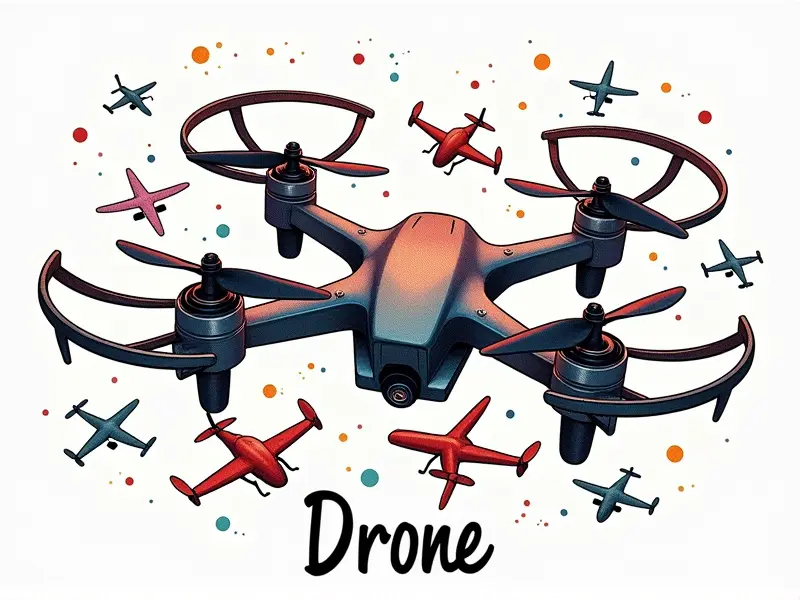Can a drone replace a satellite?

Can Drones Replace Satellites in Space?
The idea of using drones to replace satellites might seem far-fetched, but recent advancements in drone technology have sparked discussions about the feasibility of such a scenario. While satellites have long been the go-to solution for various applications ranging from communication and navigation to Earth observation, could drones be on the verge of taking over?
Drone vs Satellite: Is Replacement Possible?
The comparison between drones and satellites is complex due to their distinct advantages and limitations. Satellites offer a global perspective with constant coverage, whereas drones can provide more localized data with higher resolution images and real-time updates. However, the question remains whether drones can truly replace satellites in all aspects of space-based operations.
Are Drones Ready to Replace Satellites?
The readiness of drones to take on satellite roles is a critical consideration. Current drone technology has made significant strides in terms of endurance, payload capacity, and data processing capabilities. However, the operational challenges such as regulatory frameworks, cost-effectiveness, and technical limitations still pose hurdles.
Operational Challenges
- Regulatory Framework: The lack of clear regulations for drone operations in space is a significant barrier.
- Cost-Effectiveness: Initial investment and operational costs must be compared to the benefits offered by drones.
- Technical Limitations: Drones need advanced navigation systems, robust communication links, and extended flight times.
Could Drones Take Over from Satellites?
The potential for drones to take over satellite functions is intriguing. For certain applications like environmental monitoring or military surveillance, drones could offer a more flexible and responsive solution compared to traditional satellites.
Environmental Monitoring
- High-Resolution Imaging: Drones can capture high-resolution images with greater detail than most satellites.
- Real-Time Data: Quick response times and real-time data transmission are key advantages of drones.
Military Surveillance
- Adaptive Missions: Drones can be deployed for specific missions with rapid reconfiguration capabilities.
- Lower Detection Risk: Smaller size and lower radar signature make drones less detectable compared to satellites.
Drones: The New Satellite Competitors?
The emergence of drone technology as a competitor to satellites is evident in various industries. Drones are increasingly being used for tasks that were once the exclusive domain of satellites, such as communication relay and navigation assistance.
Communication Relay
- Mobile Networks: Drones can provide temporary mobile networks in disaster-stricken areas or remote regions.
- Data Transmission: High-speed data transmission capabilities are crucial for real-time communication needs.
Navigational Assistance
- Real-Time Positioning: Drones can offer precise positioning and navigation services in urban environments.
- Dynamic Coverage: The ability to move and adjust coverage areas dynamically is a significant advantage over fixed satellites.
Replacing Satellites with Drones: Feasible?
The feasibility of replacing satellites with drones depends on several factors. While the technology is advancing rapidly, there are still challenges that need to be addressed before widespread adoption can occur.
Advantages of Drone Technology
- Flexibility: Drones offer greater flexibility in terms of mission adaptability and deployment.
- Cost Efficiency: Lower initial costs and operational expenses make drones an attractive option for certain applications.
Challenges to Overcome
- Endurance: Extending flight times is crucial for continuous operations.
- Data Processing: Efficient data processing and transmission capabilities are essential.
Drone Technology Challenges Satellite Dominance
The rise of drone technology poses a challenge to the dominance of satellites in various sectors. As drones become more capable, they may start to outperform satellites in specific areas, leading to a shift in how space-based operations are conducted.
Data Collection and Analysis
- High-Resolution Data: Drones can collect high-resolution data with better accuracy than many satellites.
- Faster Processing Times: Real-time processing capabilities allow for quicker decision-making processes.
Exploring the Potential of Drones over Satellites
The potential for drones to surpass satellites is an exciting prospect. By leveraging their unique advantages, drones could revolutionize how we approach space-based applications and services.
Innovative Applications
- Disaster Response: Drones can provide immediate support in disaster response scenarios with real-time data.
- Agricultural Monitoring: Detailed crop monitoring and analysis are possible with drone technology.
Are Drones Set to Overtake Satellites?
The question of whether drones will overtake satellites is one that remains open. While the current capabilities of drones suggest a promising future, it's essential to consider the long-term viability and practicality of such a transition.
Long-Term Viability
- Sustainability: Ensuring sustainable operations over extended periods is crucial for drone dominance.
- Innovation: Continuous innovation in drone technology will be key to maintaining competitive edge.
The Future of Space: Drones or Satellites?
The future of space-based operations may see a blend of both drones and satellites. While drones offer unique advantages, the complementary nature of satellite systems means that they are likely to coexist rather than one completely replacing the other.
Hybrid Solutions
- Mixed Platforms: Combining drone and satellite technologies could lead to more efficient and versatile solutions.
- Integrated Networks: Developing integrated networks that leverage both drones and satellites is a promising direction.
Can Drones Compete with Traditional Satellites?
The ability of drones to compete with traditional satellites hinges on their continued evolution and adaptation. As drone technology advances, they will likely find more niches where they can outperform or complement satellite systems.
Competitive Edge
- Innovation: Continuous innovation in drone capabilities is essential for maintaining a competitive edge.
- Economic Viability: Demonstrating economic viability through cost savings and operational efficiency will be key.
Conclusion
The potential for drones to replace satellites in certain applications is significant, but the reality of such a transition remains complex. While drones offer unique advantages that could revolutionize space-based operations, the complementary nature of satellite systems suggests a future where both technologies coexist and collaborate. As drone technology continues to evolve, we may see an increasing number of scenarios where drones outperform or complement satellites, leading to a more dynamic and versatile approach to space-based applications.

